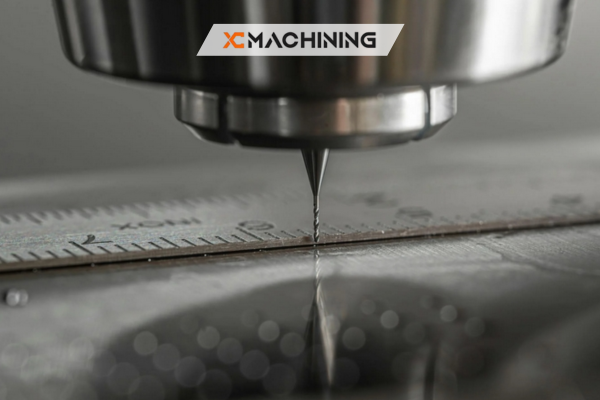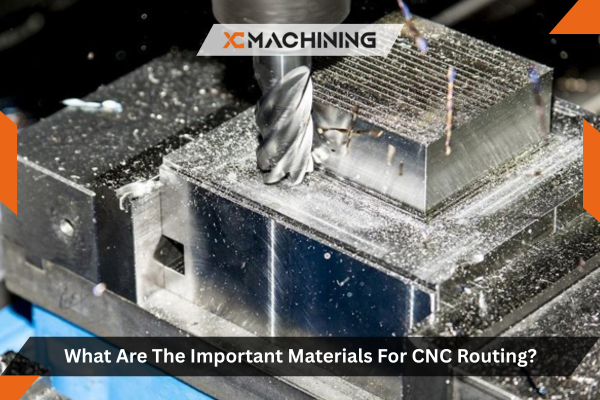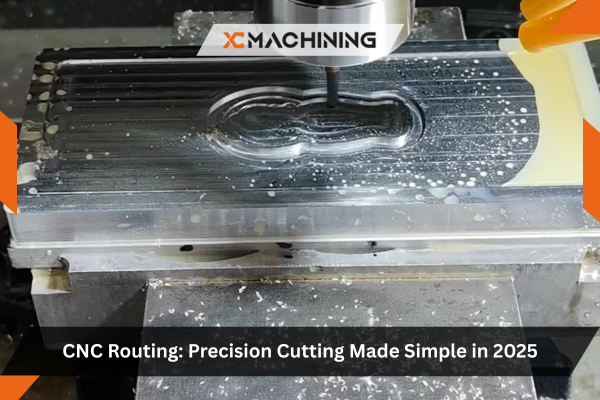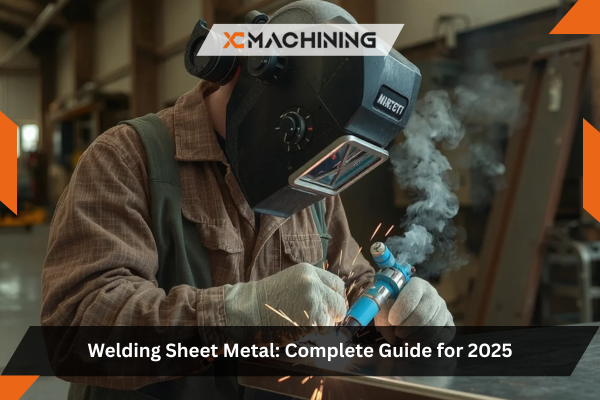CNC routing has transformed modern manufacturing, enabling precise cutting, shaping, and carving of diverse materials with computer-controlled accuracy. Whether you’re exploring CNC routing services for a prototype project or operating your own routing CNC machine, understanding which materials work best with this versatile technology is fundamental to achieving quality results. From woodworkers crafting intricate cabinetry to signage companies creating dimensional displays, material selection dramatically affects machining parameters, tool selection, finished quality, and overall project success. This comprehensive guide examines the important materials for CNC routing, their characteristics, applications, and considerations that help manufacturers, designers, and fabricators make informed material choices.
Inhaltsübersicht
Understanding CNC Routing Technology
Before exploring specific materials, it’s essential to understand what CNC routing entails. CNC routing is a subtractive manufacturing process where computer-controlled routers remove material from workpieces using rotating cutting tools. Unlike manual routing that depends on operator skill and physical templates, CNC routing systems execute precisely programmed tool paths with remarkable repeatability and accuracy.
A typical routing CNC machine consists of a gantry system that moves cutting tools in three axes (X, Y, and Z), a high-speed spindle rotating cutting bits at 10,000-24,000 RPM or higher, a sturdy worktable with vacuum hold-down or mechanical clamping systems, computer controls running CAM (Computer-Aided Manufacturing) software, and automatic tool changers on advanced systems for multi-tool operations.
The technology excels at 2D and 3D cutting, profile cutting and contouring, drilling and boring operations, engraving and v-carving for detailed work, and pocketing operations that remove material to specific depths. CNC-Fräsen services leverage this versatility to serve industries from furniture manufacturing to aerospace component fabrication.
Wood and Wood-Based Materials
Wood remains the most common material processed through CNC routing, with applications spanning furniture production, architectural millwork, cabinetry, signage, and decorative elements.
Solid Wood Species
Different wood species present distinct characteristics affecting CNC routing performance:
Hardwoods (oak, maple, cherry, walnut, mahogany):
- Require slower feed rates and multiple passes for deep cuts
- Produce excellent edge quality and fine detail
- Carbide tooling essential for extended tool life
- Beautiful natural grain patterns enhance finished appearance
- Higher material costs but superior aesthetics
Softwoods (pine, cedar, fir, spruce):
- Machine rapidly with aggressive feed rates
- More prone to tear-out and fuzzing requiring sharp tools
- Economical material choice for many applications
- Suitable for structural components and utility pieces
- May require sanding or finishing to achieve smooth surfaces
Exotic hardwoods (teak, rosewood, ebony):
- Extremely dense requiring powerful spindles and rigid machines
- Exceptional durability and distinctive appearance
- Premium pricing limits use to high-value applications
- May contain silica or oils affecting tool wear
- Often used for musical instruments and luxury goods
CNC routing companies specializing in woodworking optimize their routing CNC machine parameters—spindle speed, feed rate, depth of cut, and tool selection—based on specific wood characteristics to achieve optimal results while maximizing efficiency.

Engineered Wood Products
Manufactured wood materials offer consistency and cost advantages over solid lumber:
Sperrholz: Multi-layer construction provides dimensional stability. Available in hardwood and softwood veneers. Excellent for furniture, cabinetry, and structural applications. Edge quality depends on veneer quality and ply construction.
MDF (Medium-Density Fiberboard): Uniform density enables consistent machining with no grain direction. Produces exceptionally smooth edges ideal for painting. Dense composition dulls cutting tools faster than solid wood. Common in cabinetry, furniture components, and decorative moldings.
Particleboard: Economical material for utility applications. Coarser structure than MDF with less desirable edge quality. Suitable for structural components with laminate or veneer covering. Very abrasive to cutting tools.
Oriented Strand Board (OSB): Structural material with distinctive appearance. More challenging to achieve clean edges due to strand orientation. Primarily used in construction and packaging applications.
Plastic Materials for CNC Routing
Plastics represent the second major category of materials processed through CNC-Fräsdienstleistungen, offering diverse properties, colors, and performance characteristics suitable for countless applications.
Acrylic (PMMA – Polymethyl Methacrylate)
Acrylic ranks among the most popular plastics for CNC routing due to its excellent optical clarity, wide color availability, good impact resistance, and ease of machining with proper techniques.
CNC routing considerations:
- Requires sharp tools to prevent melting and chip welding
- Benefits from slower feed rates to avoid heat buildup
- Edge polishing creates glass-like transparency
- Available in cast (better machining quality) and extruded (more economical) forms
- Applications include signage, displays, light fixtures, and protective barriers
Polycarbonat
Polycarbonate provides superior impact resistance compared to acrylic, making it ideal for applications requiring toughness alongside transparency.
Processing characteristics:
- Tougher than acrylic, requiring more powerful machines
- Prone to chipping if tools aren’t properly sharpened
- Excellent for safety shields, machine guards, and outdoor applications
- UV-stabilized grades resist yellowing in outdoor environments
- Higher cost than acrylic but justified by enhanced durability
PVC (Polyvinyl Chloride)
PVC offers excellent chemical resistance, weatherability, and cost-effectiveness for both indoor and outdoor applications.
Material properties:
- Machines easily with standard woodworking tools
- Available in expanded (foam) and solid forms
- Expanded PVC popular for signage due to light weight and paint-ability
- Produces minimal dust compared to wood materials
- Wide availability in various thicknesses and colors
High-Density Polyethylene (HDPE)
HDPE provides outstanding chemical resistance, moisture imperviousness, and food-safe properties making it valuable for specific applications.
CNC routing characteristics:
- Flexible material requiring secure workholding
- Excellent for cutting boards, marine applications, and chemical-resistant components
- Self-lubricating properties reduce friction
- Available in various colors including food-service white
- Recyclable and environmentally friendly
Advanced Engineering Plastics
Specialized applications require high-performance plastics processed by CNC-Fräsen companies with appropriate expertise:
PEEK (Polyetheretherketone): Exceptional temperature resistance (continuous use to 250°C), outstanding mechanical properties, and biocompatibility for medical implants and aerospace components.
Delrin (Acetal): Superior dimensional stability, low friction, and excellent machinability for precision mechanical components, gears, and bearing surfaces.
Nylon: Good strength, wear resistance, and chemical resistance for industrial components, though more challenging to machine than other plastics due to its toughness.
Polypropylen: Excellent chemical resistance and fatigue resistance for living hinges, chemical containers, and laboratory equipment.
Verbundwerkstoffe
Composite materials combine multiple constituents to achieve properties unattainable with single materials, expanding CNC routing applications into demanding industries.
Fiber-Reinforced Composites
Carbon Fiber Composites: Extremely high strength-to-weight ratio makes carbon fiber invaluable for aerospace, automotive racing, and high-performance sporting goods. Requires specialized diamond-coated tooling and dust extraction due to abrasive fibers and health concerns. Expensive material justified by exceptional performance characteristics.
Fiberglass Composites: More economical than carbon fiber while providing good strength and corrosion resistance. Common in marine applications, transportation, and industrial equipment. Abrasive glass fibers wear cutting tools rapidly requiring frequent tool changes.
Kevlar Composites: Outstanding impact and abrasion resistance for protective equipment and high-stress applications. Difficult to machine cleanly due to fiber toughness. Specialized cutting strategies minimize fraying and delamination.
Aluminum Composite Materials (ACM)
Aluminum composite panels consist of thin aluminum skins bonded to polyethylene or fire-retardant cores, offering excellent flatness, rigidity, and weather resistance.
Applications and benefits:
- Architectural cladding and signage
- Lightweight compared to solid aluminum
- Excellent flatness over large areas
- Available in numerous colors and finishes
- Requires appropriate tooling to prevent delamination
Foam Materials
Foam materials serve specialized applications where light weight, thermal insulation, or ease of shaping take priority.
Expanded Polystyrene (EPS): Extremely lightweight and economical for large sculptural forms, architectural models, and packaging. Very soft requiring gentle machining approaches.
Polyurethane Foam: Available in various densities from soft to hard. Used for prototyping, patterns for casting, theatrical props, and architectural models. Machines cleanly with minimal dust.
Expanded PVC Foam (Sintra, Komatex): Closed-cell structure provides moisture resistance and good dimensional stability. Popular for signage, displays, and exhibits. Accepts paint and vinyl graphics excellently.
Metal Materials in CNC Routing
While milling machines traditionally handle metal, routing CNC machines with appropriate power and rigidity can process softer metals and thin materials.
Aluminium
Aluminum represents the most common metal processed on CNC routers equipped for metalworking:
Material characteristics:
- Requires higher spindle speeds (18,000+ RPM) than wood or plastic
- Needs appropriate feeds and speeds to prevent tool breakage
- Excellent thermal conductivity helps dissipate cutting heat
- Various alloys offer different strength and machining characteristics
- Applications include nameplates, panels, brackets, and decorative elements
Many CNC routing services in New York and other urban centers specialize in aluminum signage and architectural elements, leveraging CNC routing systems powerful enough to handle metal while maintaining the large format capabilities routers provide.
Brass and Copper
These softer metals machine well on robust routing CNC machines:
- Beautiful aesthetic appearance for decorative applications
- Good machinability though copper is gummier than brass
- Used for nameplates, plaques, jewelry, and artistic installations
- Tarnish over time unless protected with clear coatings
Thin Steel and Stainless Steel
Only the most powerful CNC routing systems handle ferrous metals:
- Requires extremely rigid machines and heavy-duty spindles
- Limited to thin materials (typically under 1/8″)
- Carbide tooling essential with appropriate cooling
- Applications limited to specialized sheet metal fabrication
Considerations for Material Selection in CNC Routing
Choosing appropriate materials for CNC routing projects requires evaluating multiple factors beyond just the material’s physical properties.
Application Requirements
Indoor vs. outdoor exposure: Outdoor applications require UV-resistant materials (UV-stabilized plastics, treated woods, aluminum) to prevent degradation. Indoor materials have fewer environmental concerns.
Structural vs. aesthetic priorities: Structural components prioritize strength and durability while decorative elements emphasize appearance and finish quality.
Temperature exposure: High-temperature environments demand heat-resistant materials like PEEK or metals, while standard conditions allow broader material choices.
Chemical exposure: Corrosive environments require chemically resistant plastics (HDPE, PVC, polypropylene) or corrosion-resistant metals.
Machine Capabilities
Not all routing CNC machines handle all materials equally:
Spindle power: Determines ability to cut dense or tough materials. Hobby machines (1-2 HP) suit soft materials while industrial systems (5-15 HP) handle hardwoods, plastics, and metals.
Frame rigidity: Affects vibration control and accuracy, particularly important when cutting harder materials requiring higher cutting forces.
Vacuum hold-down capacity: Influences ability to secure materials during machining. Porous materials like MDF require stronger vacuum than non-porous plastics.
Spindle speed range: Higher speeds (20,000+ RPM) benefit plastics and aluminum while lower speeds suit some woods and composites.
Überlegungen zum Werkzeugbau
Material selection directly impacts cutting tool requirements:
Tool material: Carbide tools handle most materials efficiently. Diamond-coated tools suit abrasive composites. High-speed steel tools work for soft materials but dull quickly.
Flute count: Single or two-flute tools suit soft materials and provide good chip evacuation. Three or four-flute tools work better for harder materials and finish passes.
Up-cut vs. down-cut: Up-cut bits evacuate chips efficiently but may cause top surface tear-out. Down-cut bits produce clean top surfaces but can pack chips in blind pockets.
Compression bits: Combine up-cut and down-cut geometry for clean edges on both surfaces of sheet materials—ideal for plywood and laminates.
Economic Considerations
Material costs vary dramatically and significantly impact project economics:
Material cost per square foot: Ranges from under $1 for MDF or softwood to $50+ for exotic hardwoods or high-performance plastics like PEEK.
Machining efficiency: Softer materials machine quickly reducing labor costs while harder materials require slower feeds, multiple passes, and frequent tool changes.
Tool wear and replacement: Abrasive materials (particleboard, composites) consume cutting tools rapidly, adding to operational costs.
Finishing requirements: Some materials emerge from CNC routing nearly finished (acrylic, aluminum) while others require extensive sanding, sealing, or painting (MDF, softwood).

Environmental and Safety Factors
Material selection affects workplace safety and environmental impact:
Dust generation: Wood materials create substantial dust requiring effective extraction. MDF dust is particularly concerning due to fine particle size and resin content.
Toxic emissions: Some plastics release harmful fumes when machined (PVC produces HCl vapors). Adequate ventilation is essential.
Wiederverwertbarkeit: Materials like aluminum, HDPE, and natural woods offer recycling or biodegradation pathways reducing environmental impact.
Disposal requirements: Composite materials and treated woods may require special disposal procedures complying with environmental regulations.
Working with CNC Routing Companies
When engaging CNC routing services rather than operating your own equipment, material selection becomes a collaborative process between client and service provider.
Material sourcing: Many CNC routing companies maintain inventories of common materials, offering convenience and potentially better pricing through volume purchasing. Alternatively, client-supplied materials may be accepted for specialty or high-value substrates.
Technical consultation: Experienced providers offer valuable guidance on material selection based on application requirements, budget constraints, and manufacturing considerations. This expertise proves particularly valuable for clients new to CNC routing.
Sample production: Reputable CNC routing services produce samples or prototypes before committing to full production runs, validating material performance and appearance before significant investment.
Geographic considerations: Local providers like CNC routing New York companies offer advantages in shipping costs, communication, and ability to review samples in person. However, online CNC routing services expand options beyond geographic limitations.
Emerging Materials and Future Trends
The range of materials suitable for CNC routing continues expanding as both materials and machines evolve:
Bio-based plastics: Plant-derived polymers like PLA (polylactic acid) offer sustainability advantages, though their mechanical properties and moisture sensitivity limit some applications.
Recycled materials: Plastics manufactured from post-consumer recycled content increasingly match virgin material performance while reducing environmental impact.
Hybrid materials: New composites combining different materials in innovative ways provide property combinations unavailable in traditional materials.
Smart materials: Color-changing, conductive, or shape-memory materials enable new functional possibilities in CNC routed components.
Schlussfolgerung
Material selection represents one of the most critical decisions in CNC routing projects, directly affecting manufacturing efficiency, finished quality, durability, and economics. From traditional woods and common plastics to advanced composites and metals, each material brings distinct advantages, challenges, and appropriate applications. Understanding these materials’ characteristics—their machinability, strength, appearance, cost, and environmental factors—enables informed decisions that optimize project outcomes.
Whether operating your own routing CNC machine, engaging CNC routing services for specific projects, or establishing relationships with a CNC routing company for ongoing production needs, material knowledge forms the foundation of successful CNC routing. As CNC routing systems become increasingly capable and material science advances, the range of possibilities continues expanding, ensuring this versatile manufacturing technology remains essential across industries from furniture making to aerospace component fabrication.
FAQs
Kann eine einfache Hobby-Oberfräse Metall schneiden?
Ja, wenn sie steif genug ist, aber beginnen Sie mit weicheren Aluminium und flache Pässe.
Warum schmilzt Acryl auf meiner Maschine?
Die Vorschübe sind zu langsam oder die Drehzahl ist zu hoch. Wechseln Sie zu einem einschneidigen Bohrer und verwenden Sie Luftkühlung.
Ist Staub von MDF schädlich?
Feine MDF-Fasern können die Lunge reizen. Tragen Sie immer eine Maske und verwenden Sie eine Staubabsaugung.
Brauche ich spezielle Bits für Schaumstoff?
Standardmäßige gerade Bits mit zwei Schneiden funktionieren. Für besonders saubere Kanten bei Schilderschaum versuchen Sie es mit einer abwärts geschnittenen Spirale.
Wie verhindere ich das Absplittern von Sperrholz?
Verwenden Sie einen Kompressionsbohrer und unterlegen Sie die Platte mit einem Opferbrett, um ein Ausreißen zu verhindern.





